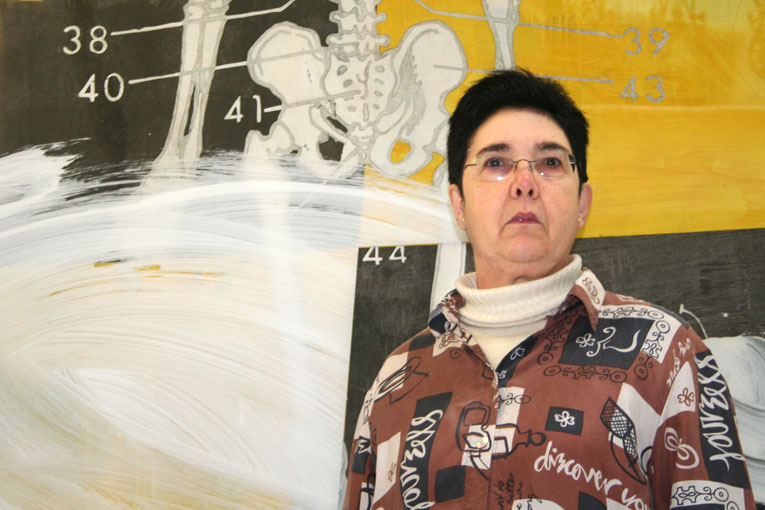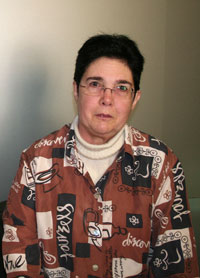
 © Andrea González Garrigas |
||
|
A serious woman of few words, Ana Labarta, expert in Arabic and Islamic Studies, received us in the López Piñero Institute for the History of Science and Medicine in Valencia. There she gave a talk on sugarcane on the occasion of the 12th History of Science and Technology Meeting. Once alone, we held our interview and you could feel she was now more relaxed, and very naturally answered our questions on her studies and research on sugarcane. Sugar, a basic nutrient nowadays, was once a symbol of prosperity for the region of La Safor. Towns such as Oliva or Gandia were, in Islamic times, big sugarcane- producing areas. You claim that today’s techniques to obtain sugar from sugarcanes are the same ones used by the Arabs, only modernised. Has technology been unable to supersede traditional techniques?
These techniques come from India. But I don’t think this is a technological matter, but an economic one. Investment on technology has to be made considering the potential profits of sugar production. It is not always worth the risk. On the contrary, with traditional means, the investment needed is minimum. Your benefits are also limited but constant. Anyway, this does not mean the sugar industry is not working. What is the process carried out in order to obtain sugar from sugarcanes? From all the innovative techniques developed to obtain sugar, which do you find to be more important or revolutionary? Why was La Safor an ideal area to grow this plant? Do you think that people living in towns like Oliva or Gandia know about the importance their towns had six centuries ago? La Safor lost prestige as a sugarcane producing region by the end of the 16th century. It was due in part to the expulsion of Muslims from the Iberian Peninsula, who were the ones growing this plant. Were we incapable of taking their work on? In your opinion, have we been capable of preserving the heritage left by the Arabs? Speaking in terms of language, architecture, harvesting techniques… According to you, what is the most important heritage left by the Arabs at the region of Valencia? And back to sugar, it seems people buy refined white sugar more than your defended pure sugarcane sugar. That’s right, but refined white sugar is more consumed than the brown one, which has more additives. In fact sugar affects us also biologically. It has been proven that it is less healthy eating refined white sugar than brown sugar. You said earlier that there is a section in society that is trying to follow an ecologic lifestyle. Do you think this will encourage people to consume unrefined sugars? Like brown sugar, for instance. So you are saying pure sugar can only be found in the tropical countries where it is still grown? You can make manufacture products from sugarcane. From rum to vinegar, wine, sweeties, clothes, alfeñiques3… Could we say it is one of the most profitable plants? Sugar has been linked to many cultures along history: China, Cuba, India… Which one has made the most of it? According to your research, sugar has helped in the development of areas like philosophy, biology, and politics, among others. Which area is more appealing to you for research nowadays? Right now I am very interested in pre-industrial technology— whether they placed cylinders vertically or horizontally, or if they used clamps, for instance. I have seen one that has some sort of stick that holds the cane and it looks like as if it was biting it. In India they have some kind of large mortars, whose diameter is one metre long, and is worked by an animal. Well, I know my field of research is the Arab world, but right now I am interested in this area— technological knowledge that will help me having a better understanding of medieval texts related to sugar. An example is the way sugar is stretched to make alfeñique. I was reading about it in an Arabic text from the 11th century and I could not understand it until I saw it was a technique used in South-America nowadays.
Notes: 1. Stone mills used up until the 16th century for sugarcane grounding . (Back to text). Andrea González Garrigas. Student of Journalism at the University of Valencia. |
«Investment on technology has to be made considering the potential profits of sugar production. It is not always worth the risk»
«The most revolutionary technique used to obtain sugar was to bite the cane, that humans realised that you could bite and eat this plant»
«Currently there are some European laws that make the sugar industry different from what it was in the middle Ages, obviously»
«Sugar production was already decaying when Muslims were expelled from Spain. American sugar was already competing with sugar from the Canary Islands and Madeira»
«Spaniards tend not to preserve their heritage. Our country preserves nothing of what it has been left with»
«Are sugary beverages responsible for childhood obesity? Of course, sugar sellers say the fats taken when drinking juices, a Coca-Cola or a Fanta cause obesity and not sugar»
«Sugarcane has many uses, but making it profitable or not is an economic matter. It depends on how it is treated, on the investment made»
«Indian culture has made the most of sugar. In fact, it is still today the first sugarcane producer in the world»
«I know my field of research is the Arab world, but right now I am interested in this area— technological knowledge that will help me having a better understanding of medieval texts related to sugar» |
|






